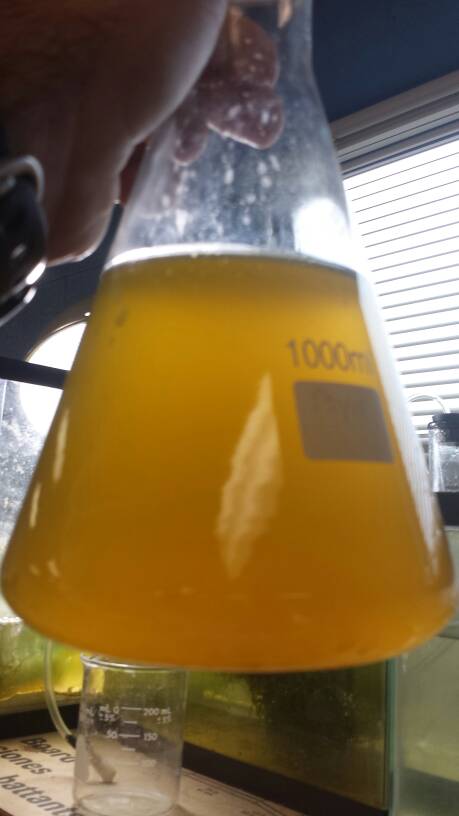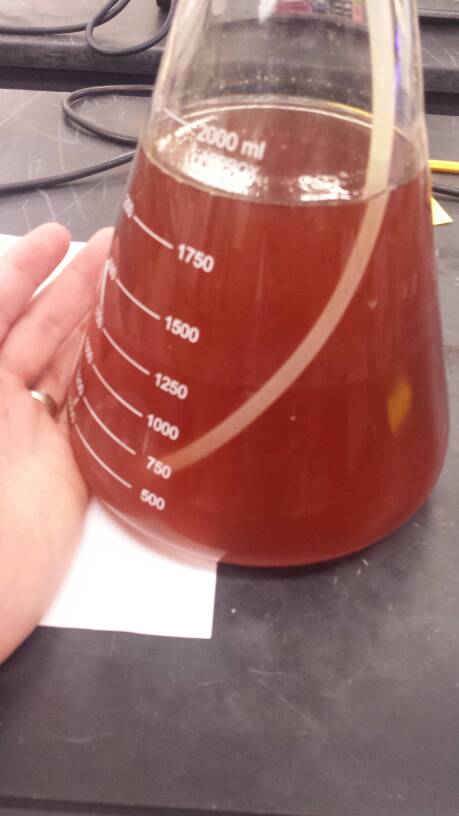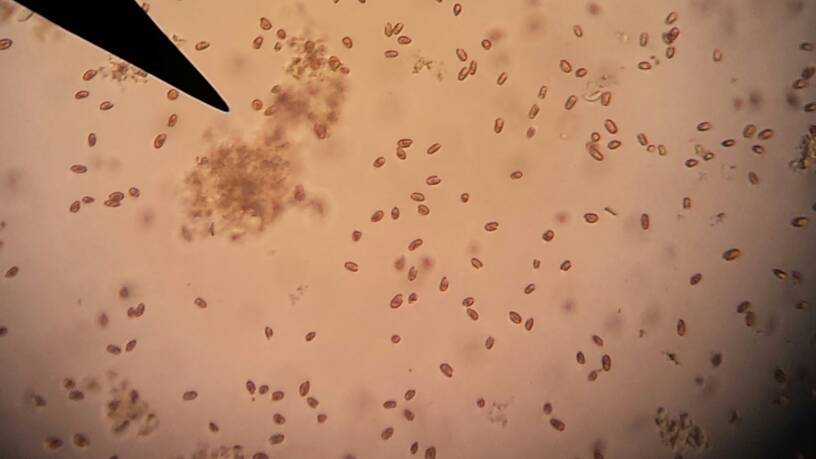You are using an out of date browser. It may not display this or other websites correctly.
You should upgrade or use an alternative browser.
You should upgrade or use an alternative browser.
Microfood culture: phytoplanktons, Rotifers, ciliates, Artemia, and copepods
- Thread starter FMarini
- Start date
Oh, thats a great enrichment greenwater, so you're golden there. Just up the amount of times you feed. I'd fed when you get up, when you get home and just before bed. It would be great if you could nail a midday feeding as well.
Someday someone will put a cheaper refrigerated peristaltic pump on the market. I tried for a while, but I cannot get the price point down cheap enough to make it worthwhile to bring to market.
Someday someone will put a cheaper refrigerated peristaltic pump on the market. I tried for a while, but I cannot get the price point down cheap enough to make it worthwhile to bring to market.
I'm newly culturing Parvocalanus pods and T-Iso. And generally new to culturing microfoods in general. Got a few Qs.
The parvo I'm raising on T-Iso and a small amount of refrigerated PhycoPure Copepod blend. At the moment I'm forced to keep the Parvo culture afloat on Phycopure for a couple more days, until I can get my T-Iso re-established because I crashed it through poor hygiene.
I'm basing my Parvocalanus info off of these sources.
#1. The info sheet from Reed Mariculture
#2. Jim Welsh's thread on parvocalanus culturing
#3. Development of intensive copepod culture technology for Parvocalanus crassirostris : Optimizing adult density Google
My Parvo cultures have a lot of growing to do. They've seemed very thin to the eyeball looking like much less than 1 adult per ml.
I put them under the scope yesterday and counted in 10 mL: 4-5 adults, and about 80 nauplii - I'd probably estimate 1/3 late stage, 2/3 early stage.
So it looks like my current adult density is .5 per mL, but in the next 3 or 4 days it'll go to over 2 adults per mL.
So when to split a culture?
Reproduction grinds to a halt when too dense in # of adults.
Source #3 "Fecundity decreased from 26 eggs per female per day at an adult density of 0.25 per mL to less than 1 egg per female per day when operated at 8 adults per mL."
It shows max egg production from females at less than 1 adult per mL, but greatest egg production per volume at around 2 adults per mL.
So early, when population growth is biggest concern split early maybe before 1 adult/mL and later when space is a concern, split at 2 or 3 adults mL?
Ammonia control?
Source #1 says "Perform 100% water changes weekly," and I'm up past a week on some of my cultures, but I don't have my strainers in yet. Can I just dilute with fresh SW, or add a little ammonia detoxifier from LFS to buy me a few more days until my strainers arrive?
The parvo I'm raising on T-Iso and a small amount of refrigerated PhycoPure Copepod blend. At the moment I'm forced to keep the Parvo culture afloat on Phycopure for a couple more days, until I can get my T-Iso re-established because I crashed it through poor hygiene.
I'm basing my Parvocalanus info off of these sources.
#1. The info sheet from Reed Mariculture
#2. Jim Welsh's thread on parvocalanus culturing
#3. Development of intensive copepod culture technology for Parvocalanus crassirostris : Optimizing adult density Google
My Parvo cultures have a lot of growing to do. They've seemed very thin to the eyeball looking like much less than 1 adult per ml.
I put them under the scope yesterday and counted in 10 mL: 4-5 adults, and about 80 nauplii - I'd probably estimate 1/3 late stage, 2/3 early stage.
So it looks like my current adult density is .5 per mL, but in the next 3 or 4 days it'll go to over 2 adults per mL.
So when to split a culture?
Reproduction grinds to a halt when too dense in # of adults.
Source #3 "Fecundity decreased from 26 eggs per female per day at an adult density of 0.25 per mL to less than 1 egg per female per day when operated at 8 adults per mL."
It shows max egg production from females at less than 1 adult per mL, but greatest egg production per volume at around 2 adults per mL.
So early, when population growth is biggest concern split early maybe before 1 adult/mL and later when space is a concern, split at 2 or 3 adults mL?
Ammonia control?
Source #1 says "Perform 100% water changes weekly," and I'm up past a week on some of my cultures, but I don't have my strainers in yet. Can I just dilute with fresh SW, or add a little ammonia detoxifier from LFS to buy me a few more days until my strainers arrive?
SantaMonica
Well-known member
Diluting would certainly work as a temporary fix. Good question on the detox though, on it's effect on the life.
Thanks for reply.
A couple of things on my parvocalanus cultures.
I diluted by almost half a few days ago, and included a water conditioner/ammonia reducer from off the shelf at the fish shop. All seems well in my 3 parvocalanus cultures. I can't say that the ammonia level would have reached problematic levels otherwise, but a couple of the culture containers had been running 2 weeks with little dilution.
I have chlor-am-x on order now. It's specifically for reducing ammonia in a concentrated culture setting. I plan to use it to allow me to be lazy and do a full strain/water change less often.
I'm still interested in hearing how others handle ammonia in their copepod cultures or larval tanks (larval tanks - big water changes are all I hear about).
Phycopure Copepod Blend. Although marketed as a live refrigerated feed (T-iso and Chaetoceros gracilis) for parvocalanus etc, I was skeptical. most of what I read said that parvo only accept live wiggling algae and T-iso is the easiest/most nutritious.
Phycopure seems to have done the trick in a pinch, despite my shipping goof that had it sit unrefrigerated for a weekend, and forgetting it out of the fridge another night. The pods accepted the food out of the bottle. I can't prove, but my eyes say there's more waste/detritus buildup at the bottom than there was with live t-iso. Which makes sense if there's less of bottled stuff being eaten.
But cultures have also, to the eye, continued to grow over about 5 days of just food from the bottle. I need to do a microscope check to see if nauplii production has continued, but it's nice to know we can feed parvo out of a refrigerated bottle if needed.
A couple of things on my parvocalanus cultures.
I diluted by almost half a few days ago, and included a water conditioner/ammonia reducer from off the shelf at the fish shop. All seems well in my 3 parvocalanus cultures. I can't say that the ammonia level would have reached problematic levels otherwise, but a couple of the culture containers had been running 2 weeks with little dilution.
I have chlor-am-x on order now. It's specifically for reducing ammonia in a concentrated culture setting. I plan to use it to allow me to be lazy and do a full strain/water change less often.
I'm still interested in hearing how others handle ammonia in their copepod cultures or larval tanks (larval tanks - big water changes are all I hear about).
Phycopure Copepod Blend. Although marketed as a live refrigerated feed (T-iso and Chaetoceros gracilis) for parvocalanus etc, I was skeptical. most of what I read said that parvo only accept live wiggling algae and T-iso is the easiest/most nutritious.
Phycopure seems to have done the trick in a pinch, despite my shipping goof that had it sit unrefrigerated for a weekend, and forgetting it out of the fridge another night. The pods accepted the food out of the bottle. I can't prove, but my eyes say there's more waste/detritus buildup at the bottom than there was with live t-iso. Which makes sense if there's less of bottled stuff being eaten.
But cultures have also, to the eye, continued to grow over about 5 days of just food from the bottle. I need to do a microscope check to see if nauplii production has continued, but it's nice to know we can feed parvo out of a refrigerated bottle if needed.
one of my parvo cultures had a bunch of die-off over two days in a new Food Safe see-through bucket. Anyone else had issues with those buckets when new.
I'm not sure if it was something about the bucket or what else it could be. but there was a not-right smell and debris accumulating at the bottom and upon inspection the debris contained a lot of dead or dying twitching adults, and tons of ciliates.
So I siphoned out the water not on the bottom and ran through a large sieve to keep only the strong swimming adults and moved them to another container with fresh saltwater.
I'm not sure if it was something about the bucket or what else it could be. but there was a not-right smell and debris accumulating at the bottom and upon inspection the debris contained a lot of dead or dying twitching adults, and tons of ciliates.
So I siphoned out the water not on the bottom and ran through a large sieve to keep only the strong swimming adults and moved them to another container with fresh saltwater.
SantaMonica
Well-known member
Well all plastics should have a good scrubbing to remove the mold-release waxes. The waxes are food safe to us but might be trouble to your pods.
Yeah, I don't think I cleaned the buckets well enough. I'm apparently going to kill a heck of a lot of stuff before I figure out this live food thing.
Has anyone tried using the Phycopure Copepod Blend as a starter for a phytoplankton culture? It's T-Iso and chaetoceros (diatom) - both of which are great foods for Parvocalanus. I know if you culture a blend, you aren't going to get a blend, but If either species grew - it'd be a good food for the parvo pods. I'll see what happens.
Has anyone tried using the Phycopure Copepod Blend as a starter for a phytoplankton culture? It's T-Iso and chaetoceros (diatom) - both of which are great foods for Parvocalanus. I know if you culture a blend, you aren't going to get a blend, but If either species grew - it'd be a good food for the parvo pods. I'll see what happens.
Has anyone tried using the Phycopure Copepod Blend as a starter for a phytoplankton culture? It's T-Iso and chaetoceros (diatom) - both of which are great foods for Parvocalanus. I know if you culture a blend, you aren't going to get a blend, but If either species grew - it'd be a good food for the parvo pods. I'll see what happens.
Update. Started with 1L flask, added ~100mL phycopure copepod blend out of fridge (let it warm first), to look light brown cloudy. After one week...

Not bad.
Under microscope it's unexpectedly still a blend of t-iso and chaetoceros. I'd estimate t-iso outnumbers the diatom cells 3 or 4 to 1.
And I think the original was closer to even split.
Good to have options.
Sent from my SAMSUNG-SGH-I337 using Tapatalk
Terry Reefer
New member
Thanks
I'll post this here because I didn't know why cultures were failing until it happened.
Some of the components used in growing phyto go bad over time.
My f/2 mix from Florida aqua farms grew me many many great liters of T-iso & nanno over 6-8 months. But then in the last month, I couldn't get any culture up and running.
The f/2 mix is susceptible to bacterial degrading over long time. Some products explicitly list expiration after months for this reason.
Another thing that I didn't know is susceptible to bacterial degrading is the sodium thiosulfate that neutralizes the bleach after sterilization.
On another note, every batch I'd ever cultured up from Phycopure Copepod Blend has produced T-iso and grown parvocalanus pods very well.
Except the last batch, which grew.....


...rhodomonas!
Some of the components used in growing phyto go bad over time.
My f/2 mix from Florida aqua farms grew me many many great liters of T-iso & nanno over 6-8 months. But then in the last month, I couldn't get any culture up and running.
The f/2 mix is susceptible to bacterial degrading over long time. Some products explicitly list expiration after months for this reason.
Another thing that I didn't know is susceptible to bacterial degrading is the sodium thiosulfate that neutralizes the bleach after sterilization.
On another note, every batch I'd ever cultured up from Phycopure Copepod Blend has produced T-iso and grown parvocalanus pods very well.
Except the last batch, which grew.....


...rhodomonas!
Luis A M
Premium Member
Well,a lucky finding.Rhodomonas is a very good alga,although a bit touchy to culture.Some,like R baltica can´t take over 20ºC.
FAF f/2 must be kept refrigerated because of the vitamins it contains.
But I keep the thio solution not refrigerated.Over time some mold/bacteriae develops but it keeps unaffected,as you can tell by the smell.
FAF f/2 must be kept refrigerated because of the vitamins it contains.
But I keep the thio solution not refrigerated.Over time some mold/bacteriae develops but it keeps unaffected,as you can tell by the smell.
Well,a lucky finding.Rhodomonas is a very good alga,although a bit touchy to culture.Some,like R baltica can´t take over 20ºC.
FAF f/2 must be kept refrigerated because of the vitamins it contains.
But I keep the thio solution not refrigerated.Over time some mold/bacteriae develops but it keeps unaffected,as you can tell by the smell.
Thanks for info from an experienced hand in this. Could you detail "tell by the smell"? Do you mean that the smell of the thiosulfate stays the same over time? Or that you smell-test after dechlorination to see if bleach is all gone?
Thio has a strong rotten eggs odour.
Off topic;are you a salamander fan?.I used to be and I even could breed Taricha!
Thanks. You captive bred taricha?! I had a t. Granulosa as a kid, and got another one in college, and it started me on the path to weird pets and this hobby.
Similar threads
- Replies
- 3
- Views
- 17K
- Replies
- 1
- Views
- 11K
- Replies
- 15
- Views
- 1K
- Replies
- 2
- Views
- 787
